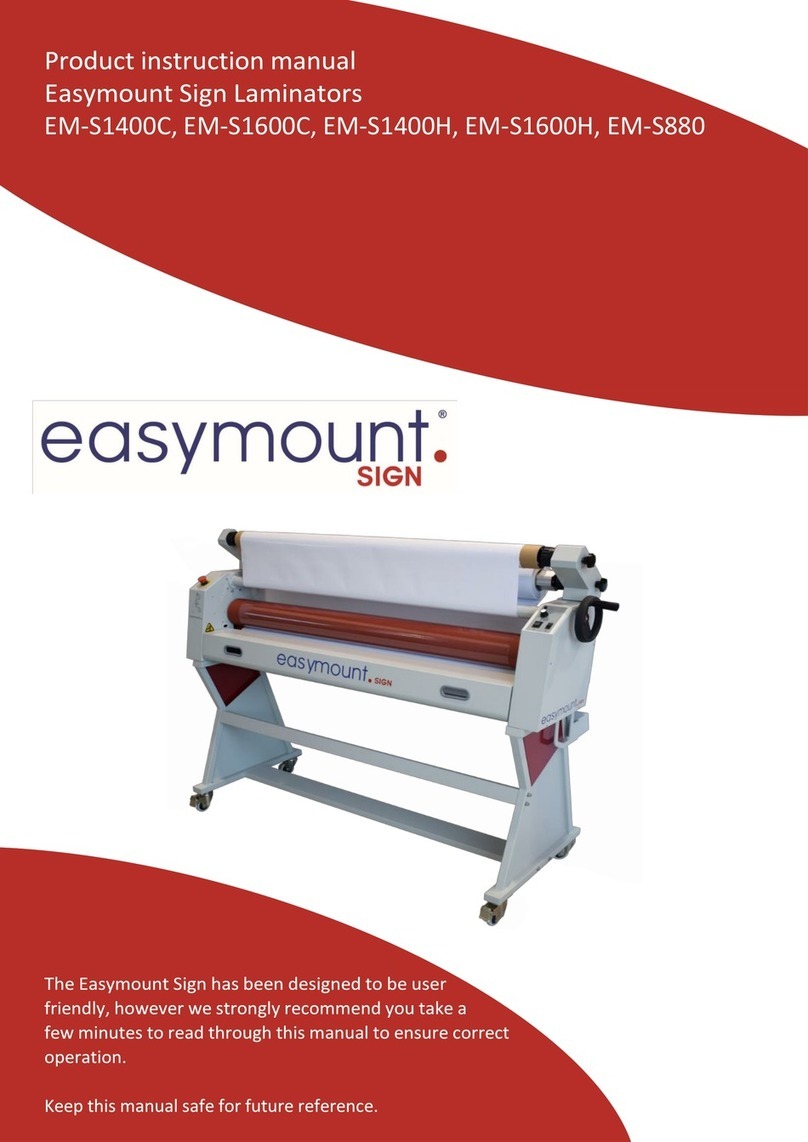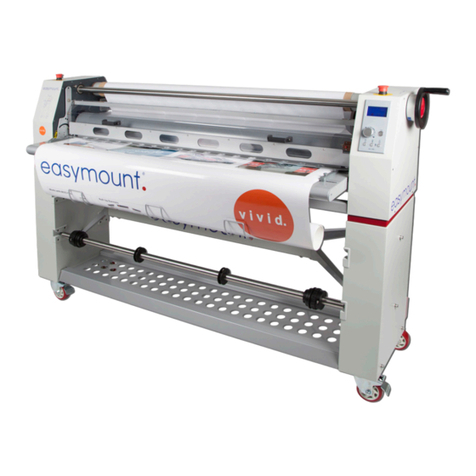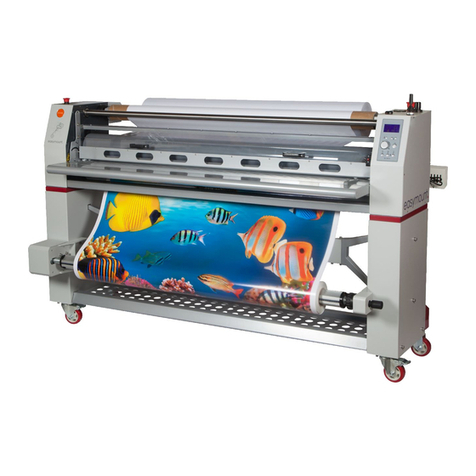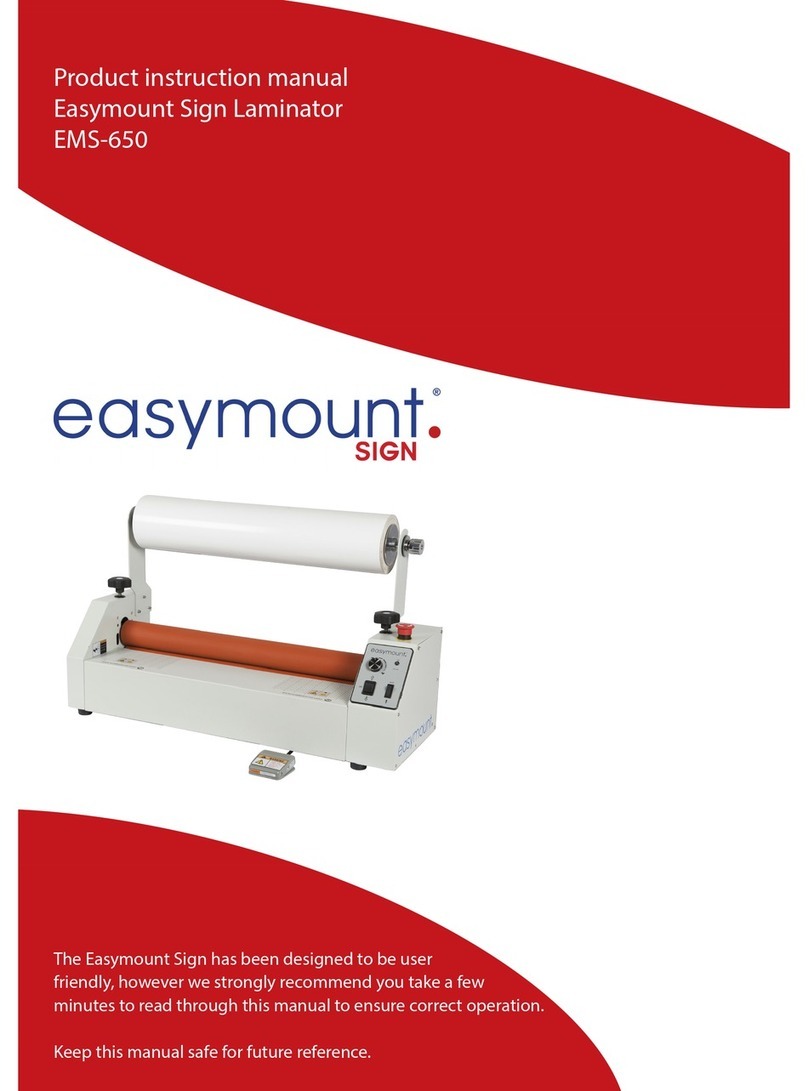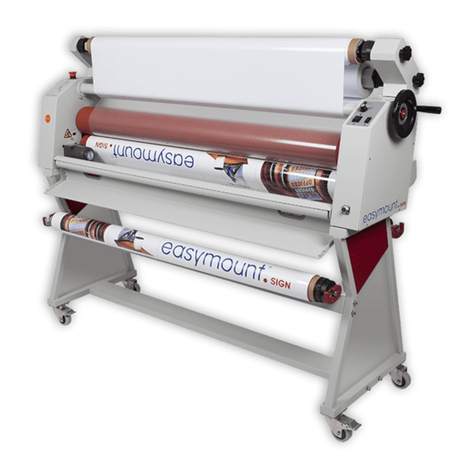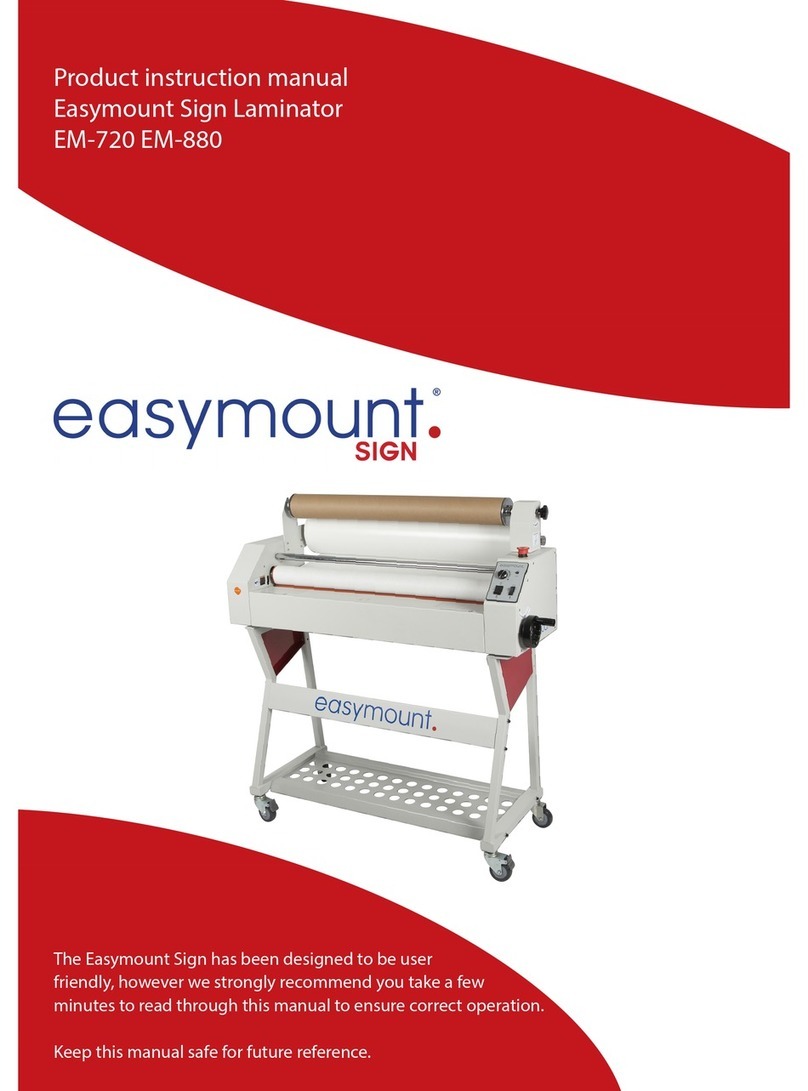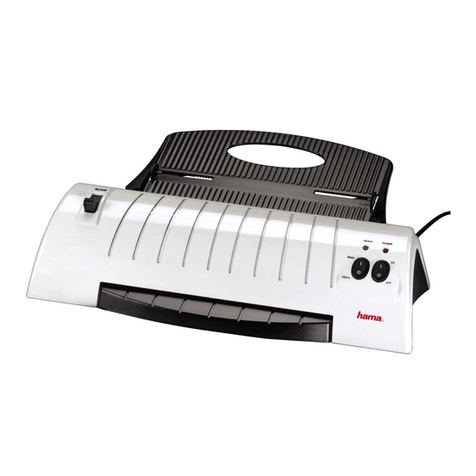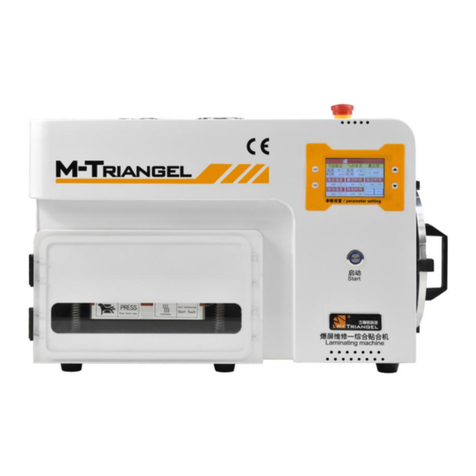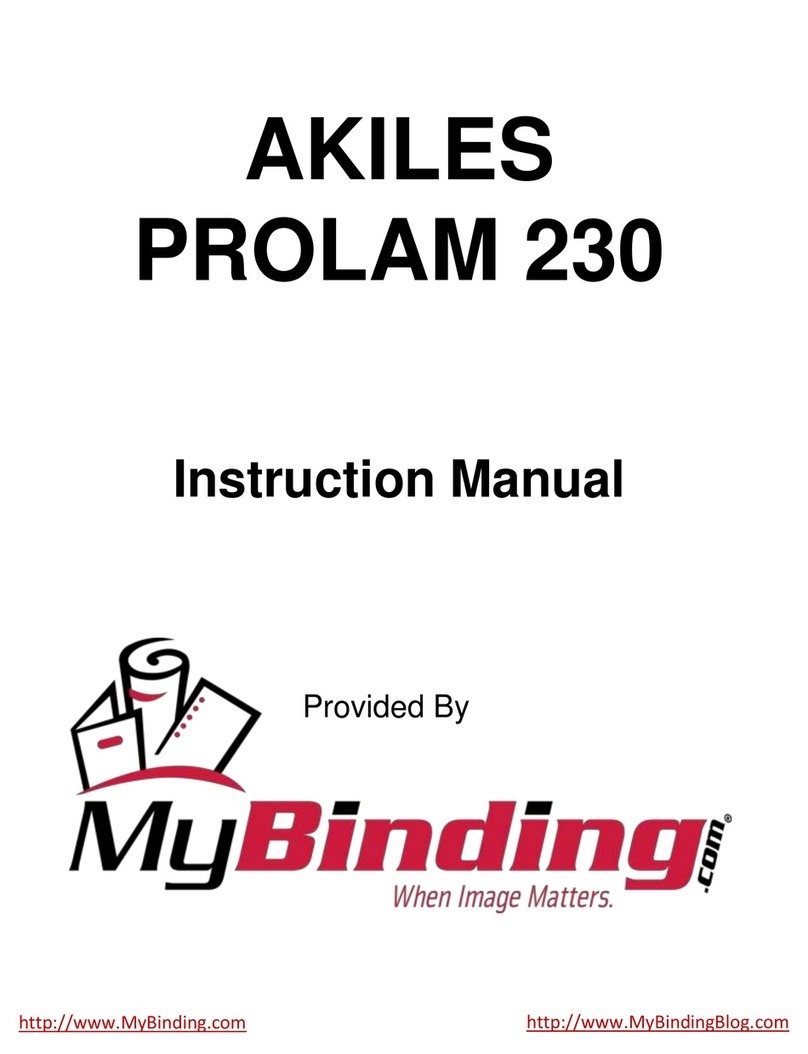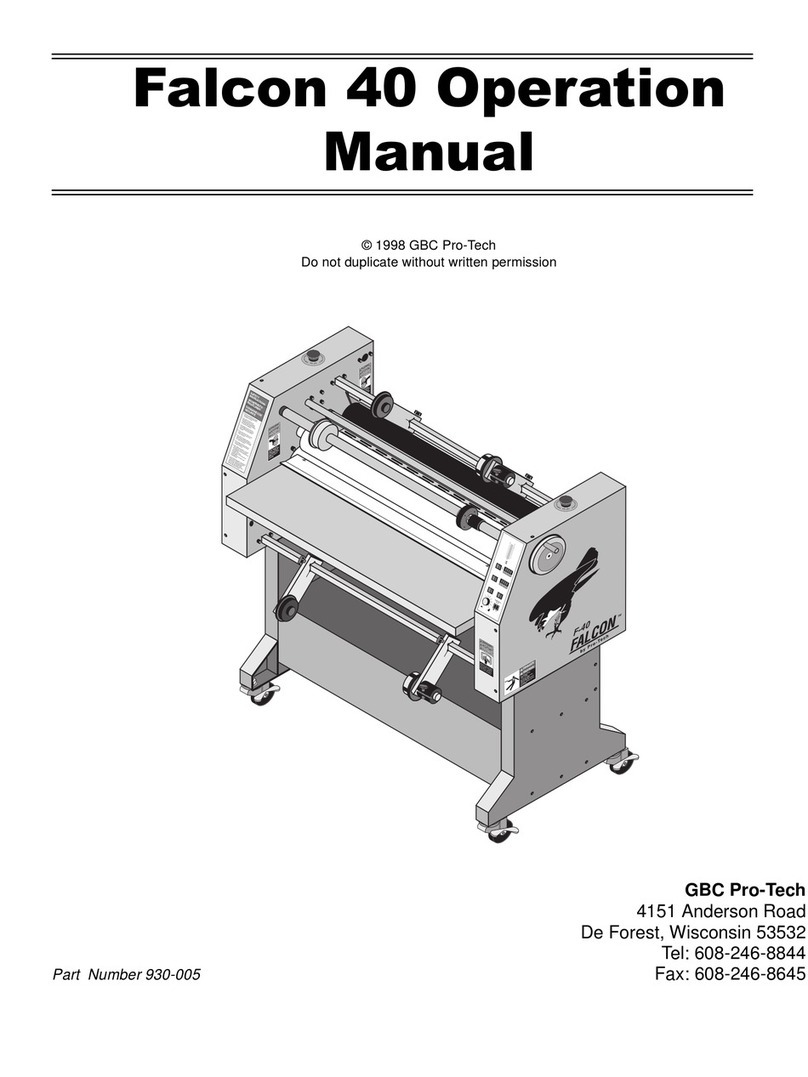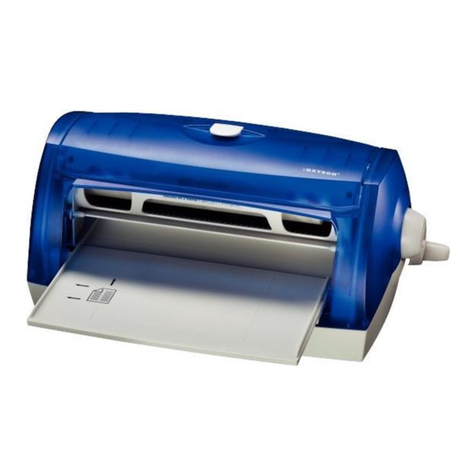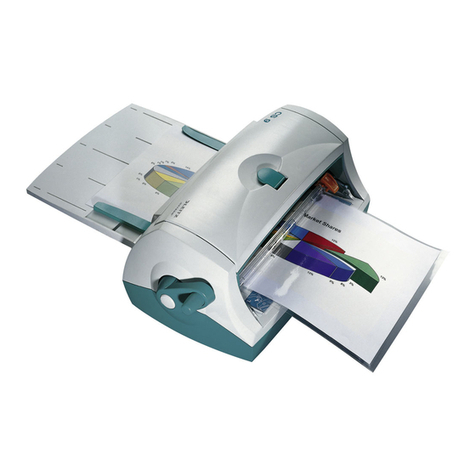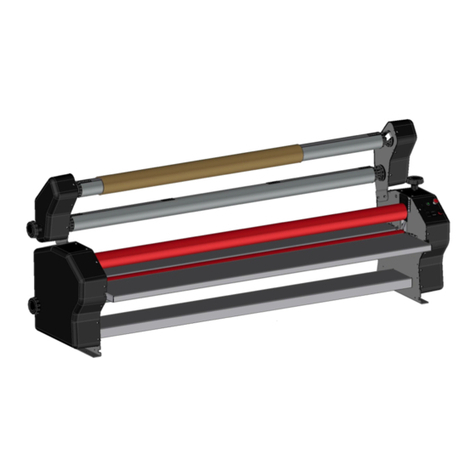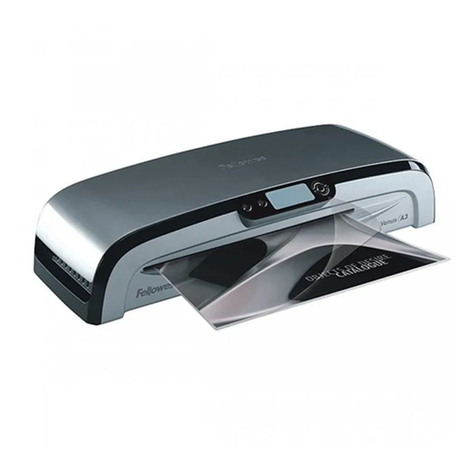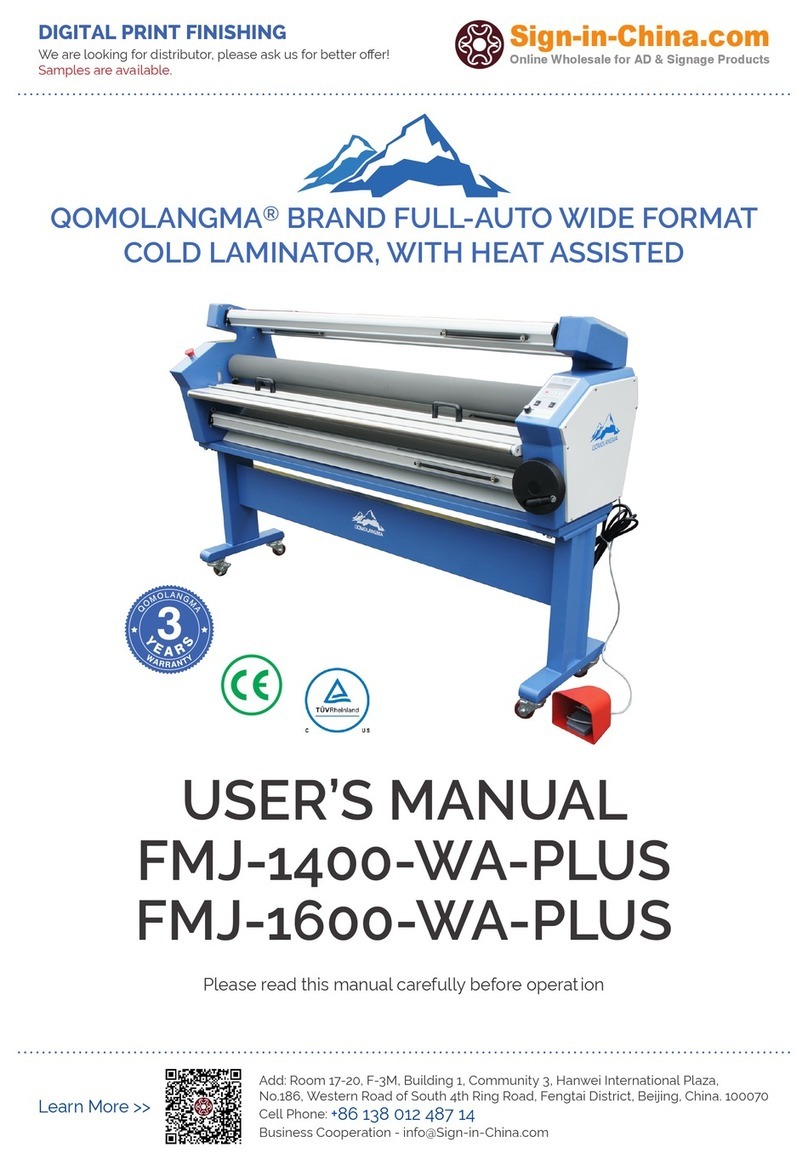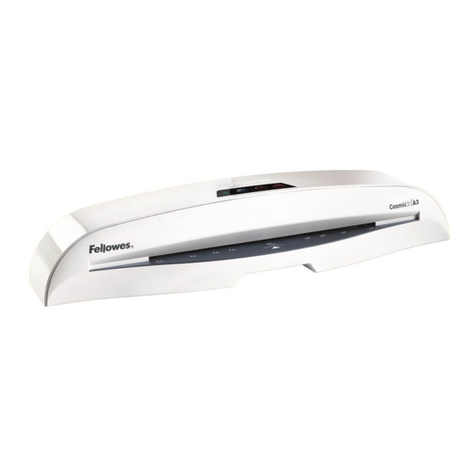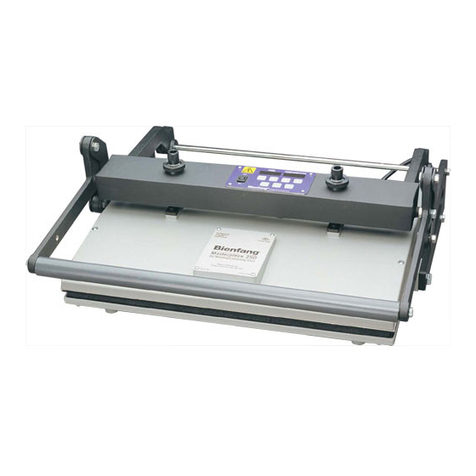
2
Ⅰ
. Applications & Characteristics of EM1180DH/EM-1650DH Series
EM-1200DH and EM-1650DH laminators are the large or medium-sized
post-production equipments for the computer picture & text systems. They integrate
the functions of cold lamination, hot lamination and mounting. The number 1200 and
1650 means the maximum widths of the films used on these machines, and the unit is
in ‘mm’.
These machines have wide applications for the films, which can adopt sheet film to
mount wide pictures, and roll film to continuously mount picture and text or carry
out single-face and double-face lamination at a high temperature.
This type of machines is applicable for various industries and fields, especially in
printing, color ink-jet printing and advertisement, etc.
With proper designs, simple structures and easy operation, quick and effective
mounting and laminating can be carried out by workers without special skills.
II. Application Requirements
·The machines should be used at a temperature ranging from 10℃- 40℃. Keep
them away from high temperatures.
·The temperature during storage and transportation is between –20℃-60℃.
·Humidity:40%—70%;ideal humidity:55%. Keep the machines away from
damp places.
·Considering the static adherence of the films, please keep the environment clean and
better not use the machines in dusty places.
·The machines should be put on special stands.
·Operation spaces: applicable and enough spaces are needed so as to ensure the safe
and effective uses. The minimum area covered is 3m x 3m.
·Keep the machines away from strong sunlight.
·When finish laminating with PVC film, please don’t leave the laminated objects on
or between the rollers for long, in case the laminated objects will lose colours.
·After lamination, if you don’t use the machine for a long time, please take away the
film and the picture and text. Do not let the film wrap around the rollers all the
time.
·It is suggested that the laminated picture and text not be put on top of rubber
substance, in case close touch may cause change of colours.
·Note:This machine can laminate automatically objects less than 12mm thick in a
succession. If you want to laminate objects over 12mm but less than 25mm thick,
you need to use the pedal switch.
